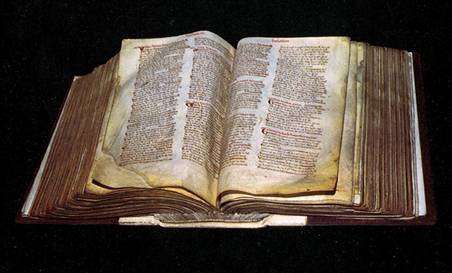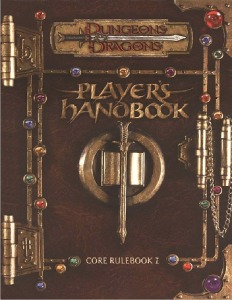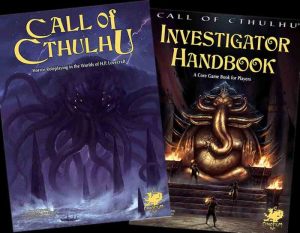You reach up to grab the flying Roc who is passing over your head, rolling for acrobatics….er…dexterity. Acrobatics was removed in this edition. You roll for damage with your longsword+1 that’s right. Numerically magic items are no longer in this edition either. So just add your strength modifier to the roll. What’s that? Oh now it’s just a fixed amount depending if you have a strength score over a certain number. I’m pretty sure that’s what the rules says. *sigh* Hold on, let me look it up.
Roleplaying editions are always going to happen both from a financial and efficient point of view. No one can expect to make one set of rules and expect to make money off the series indefinitely. Even if you saturate the market with supplemental material such as adventure modules, campaign settings, and new rule addendums, sooner or later it’s going to dry up. So new editions have to come out. Some companies enjoy making their old systems “obsolete” while others add an insert into the book that assists GMs on converting the rules over, which can be a chore if you have dozens of books on the shelf unless it can be done quick and easy on the fly. Older materials are never truly obsolete. It may be out of print, more expensive through resellers, or harder to find, but if you invested in all of those old edition books, you have more than enough material to run an effective campaign. Yes, if you want the newer rules system you will have to “rebuy” all of the books that you essentially already own, but what is the difference between doing that and buying an entirely different system from another publisher? One could argue that many editions are very similar to each other with only a few updated rules that look more appealing but are not enough to justify a rebuy of the lot. One in particular is one of my favorite roleplaying systems, Call of Cthulhu.
CoC came about back in the 80s based off the series of books and short stories by H. P. Lovecraft who wrote from about the 1910s to 1940s focusing on unknown horrors and cosmic fear. The RPG that came about from the publisher Chaosium has now witnessed the passing of 7 editions of the system. However, the core concept of the rules has remained fairly consistent throughout the years with just enough change to make it curiously more appealing than the last. Typically it is not necessary to purchase more than one edition of this system in order to enjoy the initial purpose of the game. Instead the new editions are a combination of occurring when the previous series is close to running out of prints and when the publisher feels a new edition might attract newcomers to the game.
However, not all moments in new editions are truly justifiable. When the 3rd edition of Dungeons & Dragons was released in 2000, many gamers enjoyed the new concept of the classic game since the previous edition back in 1989. It was a surge for the game system to both revitalize the industry and to assure the company would avoid bankruptcy. Unfortunately, back in 1997, when the publisher TSR was facing imminent Chapter 11, Wizards of the Coast, most famous for the creation of Magic: the Gathering, bought out TSR with dreams of capitalizing even more money. Ironically enough, their card game has made far more revenue than all of the editions they have produced combined. The unfortunate situation came about just 3 years after their production of 3rd edition was released when they released a ½ edition, which as far as I know has almost never happened in publication. With the release of 3.5, the changes to the system were minor yet a few significant changes made for considerably more arguments and confusion as to whether a rule was from 3.0 or 3.5 editions. The ½ edition was released in hardback and sold for the same amount as the three core books of 3rd edition. This naturally sparked a lot of outrage among gamers after having invested in a system that really felt that it was obsolete at the time. The truth in this statement was, unlike other editions that simply run its course, 3rd edition had barely been out with minimal supplemental material before a new edition was released that improved on several rule choices.
Keep in mind that the distance between 2nd and 3rd edition as 11 years, Wizards of the Coast produced 3.5 in 2003, 4th edition in 2008 (only 5 years later), and their latest 5th edition released in 2014 (6 years later). In the course of 14 years, 4 separate editions have been released. However, they are not the only system to have produced numerous editions in a short amount of time. Call of Cthulhu first released their game in 1981, which followed with a 2nd edition in 1983, 3rd in 1986, 4th edition in 1989, 5th in 1992, a few ½ editions around 2000, 6th in 2004, and the most recent 7th edition in 2014. Oddly enough, as Chaosium makes later editions, the distance between each one has steadily increased.
Personally, I am a sucker for some rule systems that I will invest in each edition for the shelf collection if I particularly enjoy the system (or it just looks good on the shelf). Paizo’s Pathfinder has a nice, consistent production line in their layout, which does look attractive when laid together. However, it is completely absurd to become irate at a company for producing a new edition “too soon.” when what you have is ample enough to run an efficient and enjoyable game. Even if you just have the core books for 3.0 D&D, if you enjoy the game and the rules fit your style of play, then use them and ignore 3.5. If one of your players is insisting you, as a GM, adapt to 3.5 or another rule system, keep an open mind and offer to read into it as long as they loan the material to you. There is no sense in you investing into a product you aren’t 100% interested in only to satisfy a player or two.
Also keep in mind that many conventions and gaming stores will lower the price of previous rule systems when newer ones are released, especially if they were not very popular.
I’m currently re-reading the rules of what is now referred to as Classic Traveller although it is simply the first edition published back in 1977. While there are numerous newer editions available, one especially from Mongoose Publishing, I find the original as my personal favorite. Should I update to the latest Traveller5? Of course, not. I don’t find my current edition superior, but I enjoy the structure of the system and probably a bit of nostalgia as well. Find an edition you enjoy, and don’t succumb to the temptations of a new edition just because it’s shiny and new.
Until next time, lie about your dice roll as much as you can get away with. Thanks for stopping by.





